1988 Countdown #37: Richard Marx, “Hold on to the Nights”
(New to the countdown? Catch up here.) 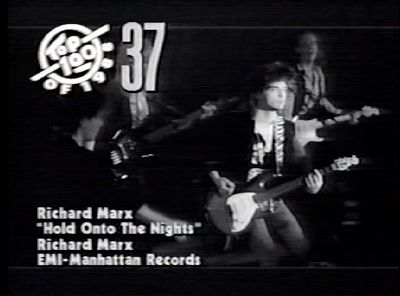 We return from our commercial break to see Adam Curry, who is somehow keeping his balance despite the enormous top-heavy weight of his hair and the twenty-pound decoration dangling from his breast pocket. Adam reads the copy while placing his splayed fingertips together, as if he were a Bond villain.
We return from our commercial break to see Adam Curry, who is somehow keeping his balance despite the enormous top-heavy weight of his hair and the twenty-pound decoration dangling from his breast pocket. Adam reads the copy while placing his splayed fingertips together, as if he were a Bond villain.
“The countdown continues of the top 100 videos of the past year, which was a spectacular year for Richard Marx. The climax of his career in 1988 must have been his show that he did for MTV during spring break in Daytona–everybody loved it. Of course, he produced Vixen in the past year, right now he’s working on the new Poco album, producing that, and he hopes to have an album of his own out by April of 1989. Right now, the #37 video on our top 100 countdown. Here’s Richard, with ‘Hold on to the Nights.’” 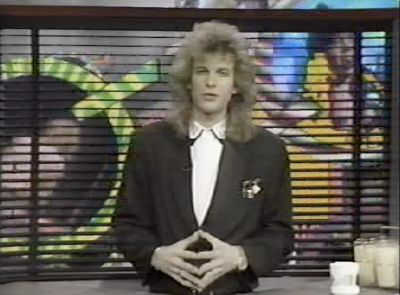 I don’t think “climax of his career” is quite what Curry meant–it implies that everything would be downhill for Marx after that–but it proved to be pretty much accurate. (He may not look back at the spring break show as the high-water mark, but I bet he gets nostalgic for 1988.) Also: Poco? Really?
I don’t think “climax of his career” is quite what Curry meant–it implies that everything would be downhill for Marx after that–but it proved to be pretty much accurate. (He may not look back at the spring break show as the high-water mark, but I bet he gets nostalgic for 1988.) Also: Poco? Really?
We get a funky transition: about forty spinning little diamonds take us from Curry on set to the video. This was a state-of-the-art special effect in 1988. “Hold on to the Nights” was the fourth single from Marx’s triple-platinum debut album, which had been peeling off singles since the middle of 1987, which means that by ancient video law, it was time for a letterboxed performance video to show Marx’s fans how hard he was working for them on that long lonely road. This appears to be the studio track with some crowd noise overdubbed; I suppose I could check by listening to the original album version, but what I am willing to endure for this countdown has limits. 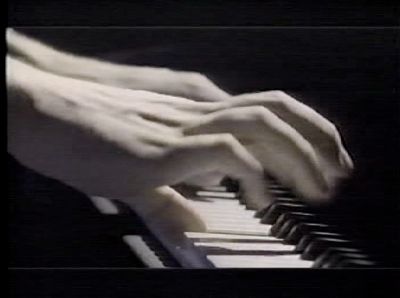 A color close-up of Marx’s hands playing the piano yields to a slow montage of black-and-white photos from the tour: screaming fans, Marx adopting a macho posture while playing guitar, more screaming fans, Marx with a microphone, Marx looking lonely at the keyboard. There’s a three-photo sequence where Marx reaches out to touch the outstretched hand of a girl in the crowd, like a particularly slow animation. MTV has the title of the song subtly wrong in the credits block: they’ve rendered it as “Hold Onto The Nights.”
A color close-up of Marx’s hands playing the piano yields to a slow montage of black-and-white photos from the tour: screaming fans, Marx adopting a macho posture while playing guitar, more screaming fans, Marx with a microphone, Marx looking lonely at the keyboard. There’s a three-photo sequence where Marx reaches out to touch the outstretched hand of a girl in the crowd, like a particularly slow animation. MTV has the title of the song subtly wrong in the credits block: they’ve rendered it as “Hold Onto The Nights.” 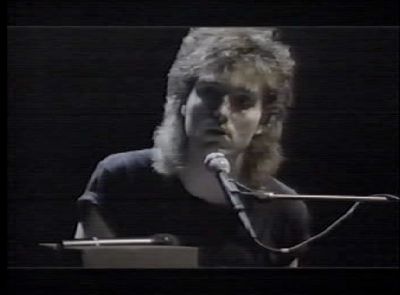 Marx begins to sing–“Just when I believed / I couldn’t ever want for more”–which doesn’t particularly improve matters. We finally cut from his hands to his face: he’s in a black T-shirt, his hair looking poodle-perfect. There is a reserve microphone sitting on top of the piano, presumably in case Marx has a microphone emergency.
Marx begins to sing–“Just when I believed / I couldn’t ever want for more”–which doesn’t particularly improve matters. We finally cut from his hands to his face: he’s in a black T-shirt, his hair looking poodle-perfect. There is a reserve microphone sitting on top of the piano, presumably in case Marx has a microphone emergency.
Marx continues singing. The lyrics don’t improve. “This ever-changing world / Pushes me through another door.” We get a wider shot, showing that Marx is surrounded by musicians in shadow, either waiting for their cue to start playing or conspiring for the best moment to leap on Marx and pummel him to death with that reserve microphone.
More doggerel: “I saw you smile / And my mind could not erase / The beauty of your face.” In 1988, I thought this song was a dreary, forgettable ballad, and it hasn’t gotten better in the interim. The main thing it has going for it is a certain level of professional craft: it’s a well-made, if utterly generic, song, with a professional but bloodless performance.
When this song was at its commercial height, my friend Ted Friedman was doing a shift at our college radio station, WYBC, playing the likes of Mudhoney and Sonic Youth. He got a call from a young woman who requested “Hold on to the Nights.”
“I’m not going to play that,” he told her. “But it’s the number-one song in the country. Just flip around on your radio–you’ll find it somewhere.”
We see a white towel on top of the piano, presumably because Marx sweats excessively when he’s emoting at full strength. Then there’s a live shot of woman in the audience, singing along to “let me shelter you.” 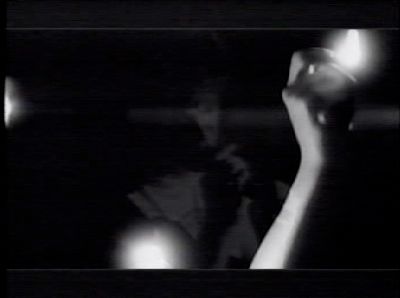 We get many more black-and-white still pictures (Marx playing guitar, Marx clenching fist, fan with lighter held aloft): my operating theory is that Marx’s management paid some photographer a lot of money for them, discovered they didn’t have any real use for them, and wanted to amortize the cost by throwing them into the video’s budget.
We get many more black-and-white still pictures (Marx playing guitar, Marx clenching fist, fan with lighter held aloft): my operating theory is that Marx’s management paid some photographer a lot of money for them, discovered they didn’t have any real use for them, and wanted to amortize the cost by throwing them into the video’s budget.
With a little shimmer of drumsticks on a cymbal, the band joins in, barely audibly. They are totally paycheck pros. The drummer has a big mop of curly hair, a mustache, and a pugnacious face. He looks like he’s the second heavy behind Dennis Farina in a made-for-cable gangster movie.
Marx renders the word “surprise” as “surpri-yi-ai-ize.” The rhyming word is “disguise,” which he manages to sing with fewer syllables. The editing on the still photos gets faster, trying to communicate a sense of excitement that the chorus doesn’t. With images of Marx’s tour flickering by, the video has a victory-lap feel, as if he was about to go into a long retirement. We see one shirt with a graphic element (Benetton?) and another with a picture of a gaunt Elvis Presley, with “ANNIVERSARY” visible underneath. Overplaying one’s Elvis delusions is a pretty common pitfall for the second-rate rock star. 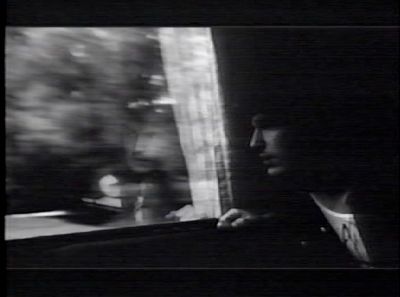 Marx reaches the bridge, an opportunity to give us a few glimpses of offstage Richard: walking to the tour bus, looking out the bus window at blurry scenery, the band posing together, Richard presenting a gold record to a woman in a hospital bed (presumably an ailing fan who got a special visit, not somebody that got hit by his bus), Richard lying on a hotel bed and talking on the phone, then several shots of Richard looking pensive.
Marx reaches the bridge, an opportunity to give us a few glimpses of offstage Richard: walking to the tour bus, looking out the bus window at blurry scenery, the band posing together, Richard presenting a gold record to a woman in a hospital bed (presumably an ailing fan who got a special visit, not somebody that got hit by his bus), Richard lying on a hotel bed and talking on the phone, then several shots of Richard looking pensive. 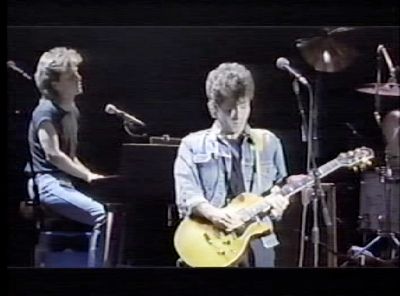 The band has been laboring, to little effect on the audio mix. But now there’s an audible guitar solo. The guitarist is wearing a denim jacket and has his hair piled high; he looks like a Q-Tip. Marx picks up that microphone–as Chekov said, if there’s an unused mic sitting on the piano in the first act, a singer must use it in the third act–and goes right to the lip of the stage. A reserve pianist is released from his life-support pod and fills in on the keyboard.
The band has been laboring, to little effect on the audio mix. But now there’s an audible guitar solo. The guitarist is wearing a denim jacket and has his hair piled high; he looks like a Q-Tip. Marx picks up that microphone–as Chekov said, if there’s an unused mic sitting on the piano in the first act, a singer must use it in the third act–and goes right to the lip of the stage. A reserve pianist is released from his life-support pod and fills in on the keyboard.
Marx kneels down next to one young woman in a maroon top, who is singing along. Right next to her are three guys, who look kind of bored, and I wonder how they ended up in the front row. This doesn’t actually appear to be a live show–I think it was filmed in a studio with just a few rows of fans, and was bolstered by the photos to give that onstage feel. 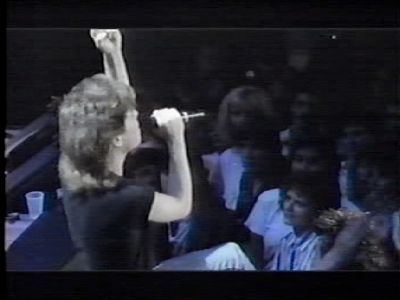 Marx hits his version of maximum rockage, belting out the chorus while reaching up to the sky. As the guitarist keeps soloing, we see more black and white shots of the band, revealing that it has a saxophone player. Marx leans back and finishes with a dramatic punch in the air, and again, and again. And then the video ends with a shot of a single lighter in the air, a testament to the raw pulsating power of adult-contemporary music.
Marx hits his version of maximum rockage, belting out the chorus while reaching up to the sky. As the guitarist keeps soloing, we see more black and white shots of the band, revealing that it has a saxophone player. Marx leans back and finishes with a dramatic punch in the air, and again, and again. And then the video ends with a shot of a single lighter in the air, a testament to the raw pulsating power of adult-contemporary music.
“Hold on to the Nights,” as mentioned previously, topped the Billboard singles charts. You can watch it here. It was the last single off Richard Marx; while it seems odd to end an album cycle right after you hit #1, I guess he must have been eager to get to work on Repeat Offender. Or maybe the record company thought everything else on this record was dreck. Marx also appeared on the countdown at #66, with “Endless Summer Nights.”
posted 25 September 2014 in 1988 and tagged Richard Marx. 8 comments

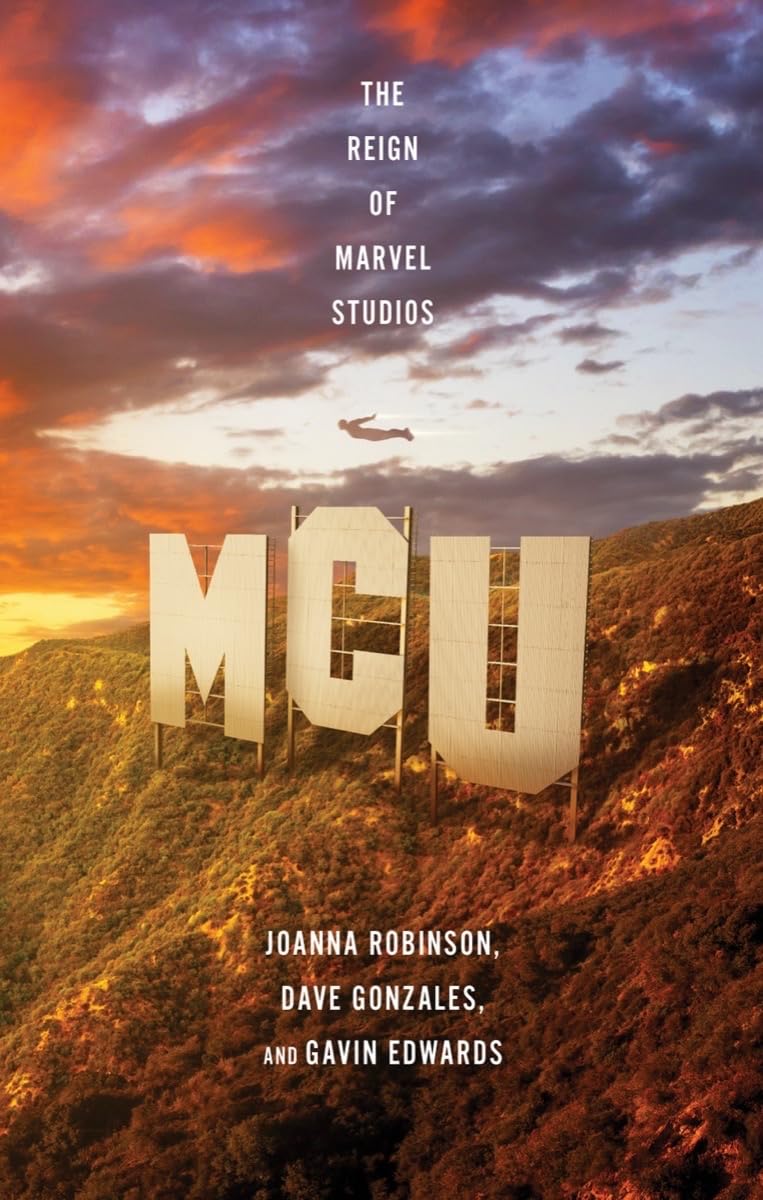
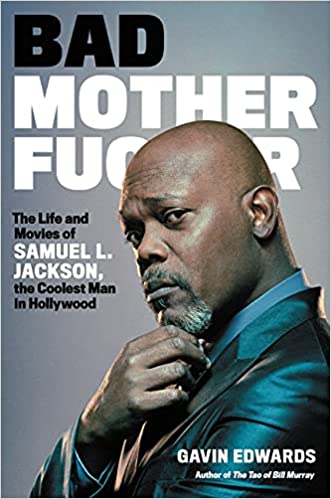
September 26th, 2014 at 11:50 am
Two thoughts:
1. As I said in the comments on “Endless Summer Nights,” while I’d like to believe ’88 was the peak for Marx, his ’89 was arguably bigger: No. 1 album, two more No. 1 singles, including his A/C standard for the ages (though I still hear this one, too).
2. This song finally reaching No. 1 after three Top Five singles continues a bizarre late ’80s chart trend among a range of pop acts, where the power ballad rings the bell (and gets the heavy label payola) after a trio of prior, more uptempo singles that didn’t quite make it:
• Exposé (1987–88): “Come Go with Me,” “Point of No Return,” “Let Me Be the One,” then they hit No. 1 with the ballad “Season Change”
• Debbie Gibson (1987–88): “Only in My Dreams,” “Shake Your Love,” “Out of the Blue,” then she hit No. 1 with the ballad “Foolish Beat”
• Def Leppard (1987–88; I am not counting the rock-radio track “Women”): “Animal,” “Hysteria,” “Pour Some Sugar on Me,” then they hit No. 1 with the ballad “Love Bites”
Uncanny.
September 26th, 2014 at 11:54 am
P.S. The schlocky 1989 Poco record can’t be blamed on Marx alone—he only wrote/produced one über-schlocky track, which was the second single and did make the Top 40:
https://www.youtube.com/watch?v=H69fAG7VMbs
It wasn’t even the big hit—the leadoff single, “Call It Love” (generic midtempo psuedo-rocker), was a Top 20 hit.
September 26th, 2014 at 11:57 am
Well, that power-ballad success makes sense with a band like Def Leppard, right? They’ve got the uptempo-rock audience in their pocket, but if you bring them along for a ballad and get a different set of listeners, you can have a bigger success. And similarly, Expose, only with uptempo dance. Debbie Gibson, I can shoehorn her into that paradigm, but I feel like I’m forcing it.
January 18th, 2015 at 2:29 pm
Been away from here for awhile. I remember Adam Curry recalling how he came to blows with Richard after derisively introducing him during the ’89/’90 Dawn of the Decade bash when the latter came late.
If there’s one thing I give Marx credit for here, it’s holding off on the sappy love ballad until the last single. The usual strategy would be to release it as the 2nd or 3rd off the album for maximum momentum. He may be safely adult contemporary, but at least he can’t be accused of being a sellout. He even defended someone accused of illegally downloading music when one of his songs was cited among the downloaded.
Yet at the time, he was surprisingly successful on MTV. All 7 of his vids to come out during the ’80s went top 5 on the Top 20 countdown, though they were a little more iffy on the year end charts save for ’89. Don’t Mean Nothin’ peaked at #2 yet charted at #59 on the year end chart for ’87, and Shoulda Known Better peaked at #4 and was #43 that same year, the earlier seen Endless Summer Nights peaked at #2 of course, and this video matched its Billboard feat by reaching #1. Remarkably enough, it leapfrogged and delayed a then white hot Aerosmith’s run on the top with Rag Doll in doing so.
In 89, he did a bit better with Satisfied than Right Here Waiting; both hit #1 on MTV, but the former had 2 weeks on top and was #19 of the year, while the latter had just one and ranked #52 that year. (Angelia peaked at #2 late that year and was #76.) The end of the year saw “…Nuthin'” ranked at #87 and this video ranked at #75 for the decade, a major, major upswing for both vids.
He didn’t do half as well on the channel subsequently, the last significant video there being “Hazard”.
P. S. One funny postnote I remembered: his appearance on Tim and Eric singing “Little Dancing Man”, the soundtrack video spoof that accompanied the Tairy Greene film bit. Hilarious stuff.
October 10th, 2015 at 5:32 pm
I’ve made it. 73 entries, and the rest.
I didn’t expect to see Richard Marx at the finish line, still holding on to the nights, but here we are. 73 entries, the good and the bad. Funny how sometimes you can even feel nostalgic for acts you disliked at the time. (Not Richard Marx though. Foreigner, Duran Duran.)
I had always filed 1988 away as an uninteresting year musically, a weak year, but I’m glad to have been proven wrong. There’s good stuff among the dross.
Anyway, thank you for a very entertaining trip so far. I’ll be here for the next entries.
October 10th, 2015 at 6:33 pm
Thanks, Hieronymous! I’m looking forward to getting back to the countdown soon. Next up… more Michael Jackson!
October 11th, 2015 at 9:26 am
Nice!
And I can’t count: it’s 63 entries, not 73. Of course I had to state that number twice in my post so I can’t say it’s a typo now.
October 12th, 2015 at 6:52 pm
Actually, 64 (plus bonus videos like “Paradise City”), but who’s counting?